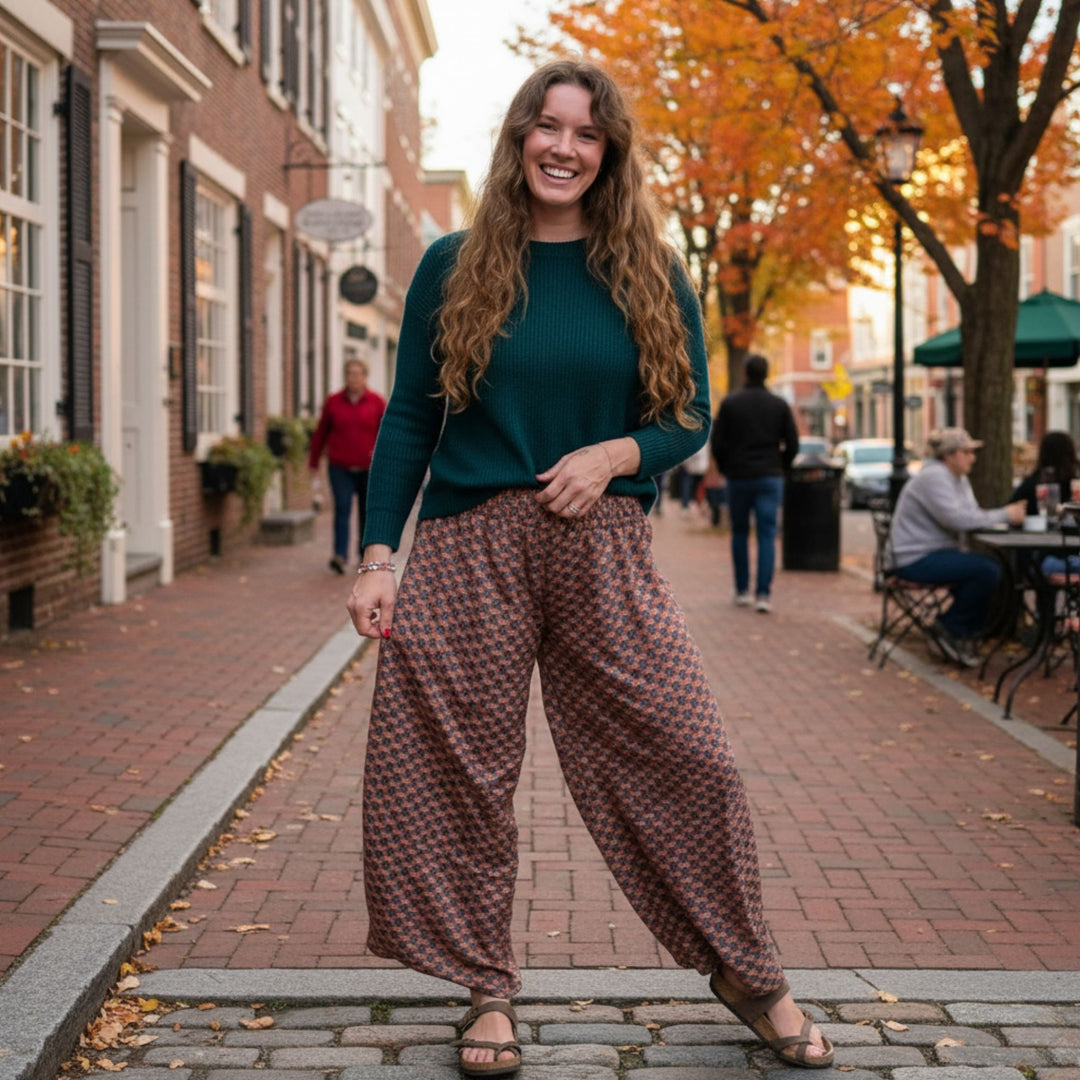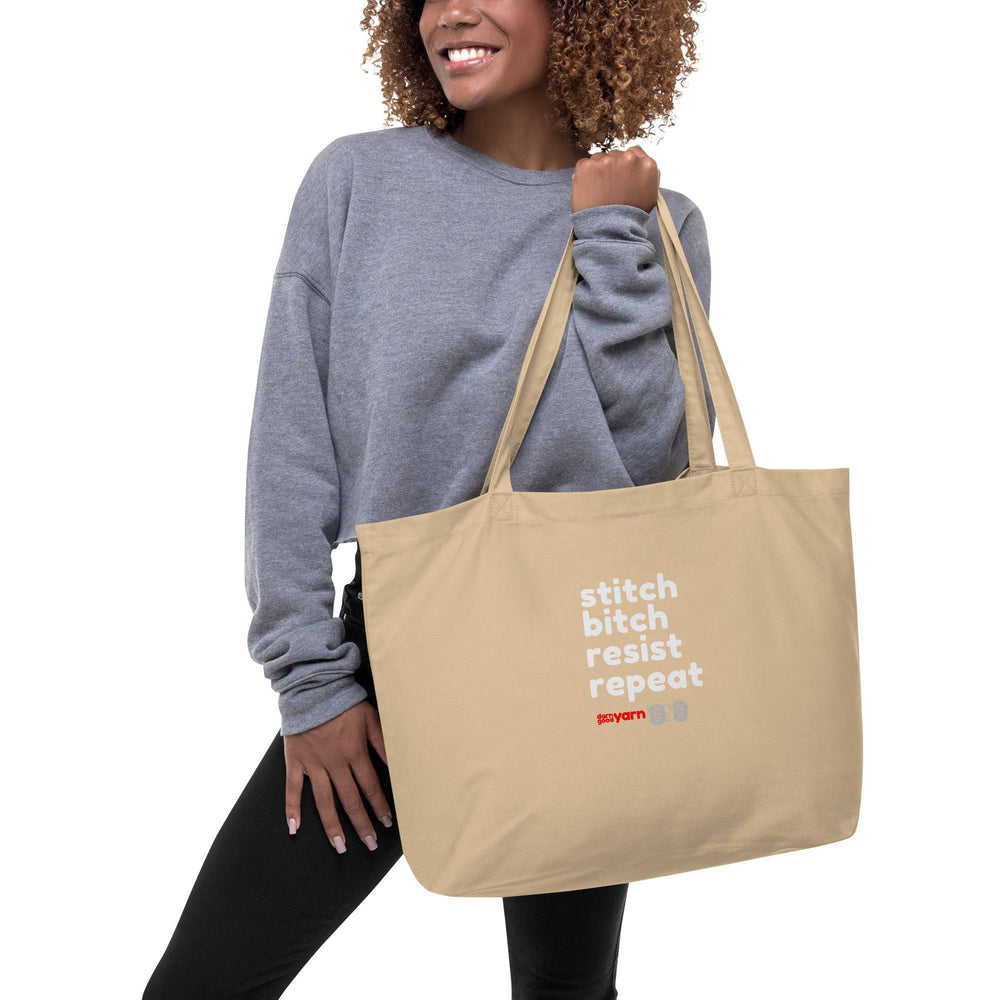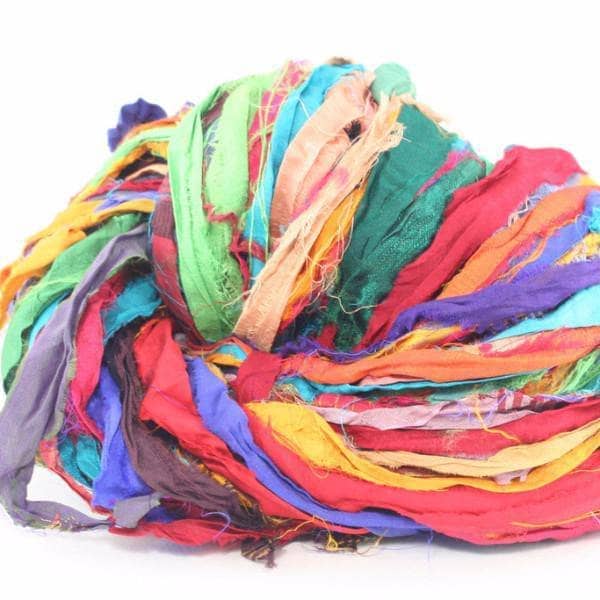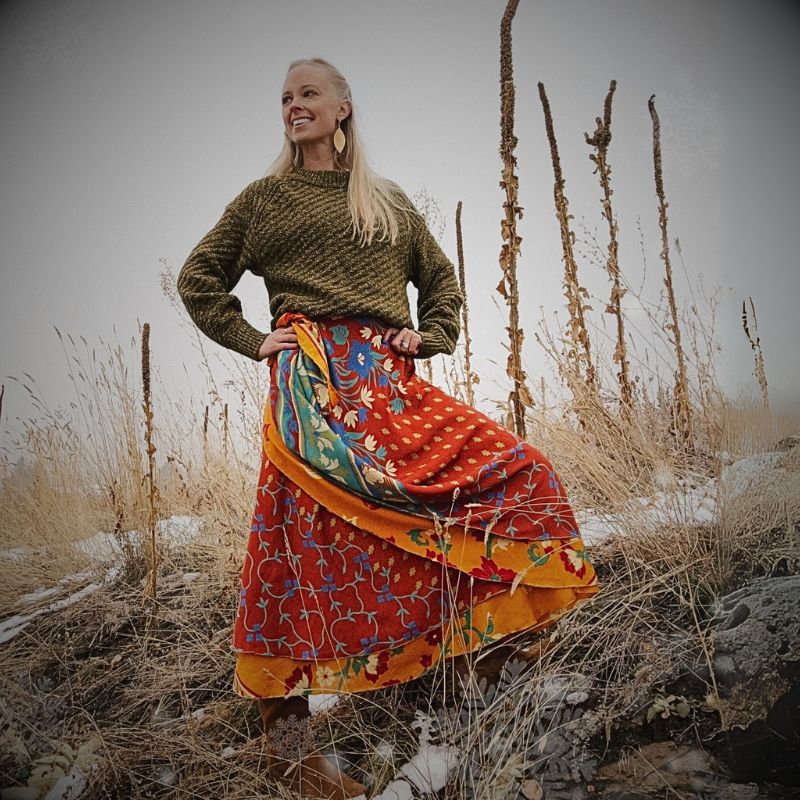Carol Feller is one of the biggest names is the knitting community. Apart from being a successful independent knitwear designer and knitting teacher, Carol has also added bestselling author, blogger and tour guide to her list of duties. All that while being a wife and a proud mom of 4 fantastic boys.
In this interview we had the privilege to talk to Carol and to find out a bit more about her motivation, ideas and techniques.
Carol, in your biography you say that you came back to knitting after the birth of your fourth son. What was that crucial moment when you decided to pick it up again?
I used to run an online natural parenting company that I sold when I was expecting my fourth son. I had intended on becoming a full time mother. However, within a few months of his birth even though I was very busy I craved more mental stimulation. Some friends began talking about a brand new online knitting shop ‘This Is Knit’ that had just opened up and I had vague memories of knitting in my past. I started to think that maybe I could try it again.
When I contacted the shop they were so encouraging that before I knew it I had baby knits for beginner’s book, yarn for a project and needles. Within days I was hooked. I couldn’t believe how quickly the mechanics of knitting came back to me and I loved it so much. Within months I was modifying patterns and within a year I had my first pattern published. So basically once I picked up the needles again I was obsessed!
One of the things that you are famous for is your work with gradient colours. In your opinion, what is the most important thing when it comes to combining colours, knitting patterns and, of course, types of yarn?
I’m not a big person for definitive rules, I like to give people the information, let them know my own personal preference and then let them make up their own mind. Colour is a very personal choice but if you have some basic knowledge it makes it easier to combine yarns. I’ve recently done a blog post on gradient yarns describing the basic types out there; mini-skein sets, single skein gradients and DIY gradient combinations. Each of these categories lends itself to different types of patterns.
A mini-skein set can easily be extended by combining a few sets together (repeating each colour in the set for a wider band of the single colour) or with a neutral complementary colour. Alternating a neutral with each gradient stripe creates a wonderfully cohesive finished project. Knitters should look for patterns with good ‘break’ points that would work well combined with a change in gradient colour. A single skein gradient blends smoothly from one colour to another making it ideal for projects like shawls or long cowls that don’t have natural breaks in the pattern to put the colour change in.
Finally, a DIY gradient kit is the most versatile, but requires the most planning. For a knitter with an extensive stash it’s even possible that they might be able to put their own gradient set together with gradating or complementary colours. These are ideal for larger projects as you are probably working with greater yardage then with a premade set.
You are a very successful author of five bestselling knitting books - where do you get inspiration for new patterns and designs?
When working on a book, the overall theme provides the more general inspiration. I try to put a series of sketches, swatches and photos together for myself to see how it all fits together as a whole. For Dovestone Hills the yarn was the driving force; it’s an earthy, but soft yarn with colours that work nicely together. I wanted the collection to be wearable and allow colour combinations to dominate. They were all pieces that I wanted to own and wear myself, so it was like knitting a little capsule wardrobe!
With bigger books such as Short Row Knits the technique itself was the inspiration. This meant that the patterns needed to combine together to provide a good range of project types and levels of difficulty. I love working on larger collections like this, it feels cohesive and meaningful even beyond the individual patterns. It also gives you a framework to create inside, even creative like a certain amount of structure!
In your book “Short Row Knits” you offer twenty different tutorials for some fun projects - we would love to know which one is your personal favourite?
I shouldn’t really be playing favourites :-) In terms of knitting I think the little ball, Chirripo is the most fun; it’s small and tidy and it’s really wonderful watching it take shape just using short rows! I love designing and wearing hand knits and I think my two favourites in this book are probably Jimenez and Riyito. I’m currently enjoying looser fitting, flowing garments and both of those fit right in with my current style.
Finally, could you tell us a bit more about crafts tourism in Ireland and what inspired such a tour?
Over the last few years knitting tours in Ireland seem to be taking off. Ireland has such a rich textile heritage that it makes it a fascinating destination for knitters. You’ve got yarn mills, weaving, Aran islands, sheep and alpaca farms as well as a wide range of non-yarn destinations to visit. I’ve been teaching a class for Irish Tourism on each of its tours over the last few years as well as with Jean Moss.
This autumn CraftTours brought a knitting tour to Ireland and asked me to join them for a few days as an escort. The first part of the tour was in Galway visiting heritage destinations and a farm and then when I joined them in Dublin we went to Belfast, Avoca Woollen Mills and the Knitting and Stitching Show. I finished with them on the final day with a class that gave them a virtual tour of the Irish mills through my book ‘Contemporary Irish Knits’. While traditional Irish wool isn’t very widely used any more for knitting due to its rougher texture, the existing Irish mills are innovating with merino blends and new yarn products. There has been a big resurgence in knitting in Ireland over the last number of years, so tours are now about the Irish knitting future as much as it’s past.
 Rewards
Rewards




















